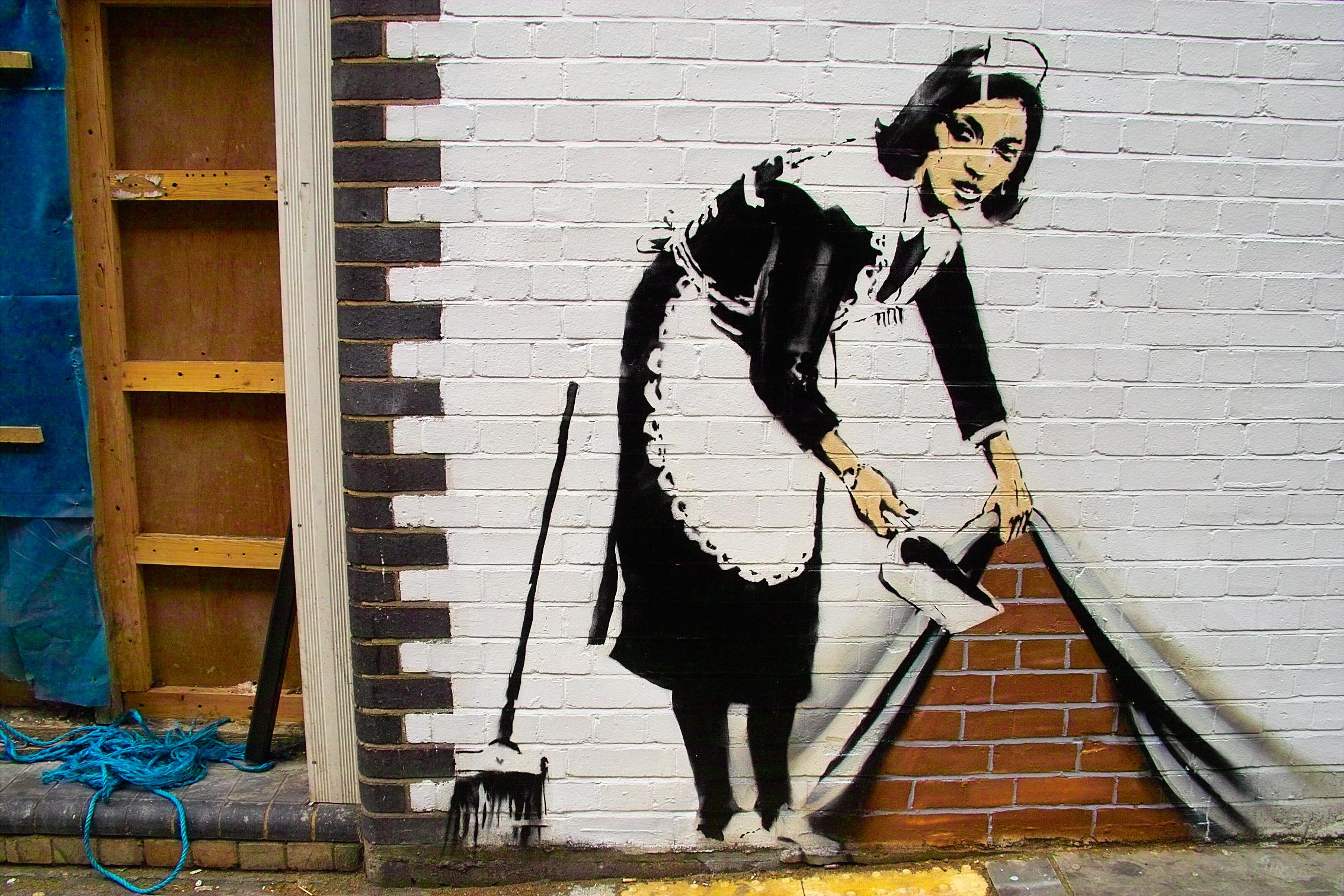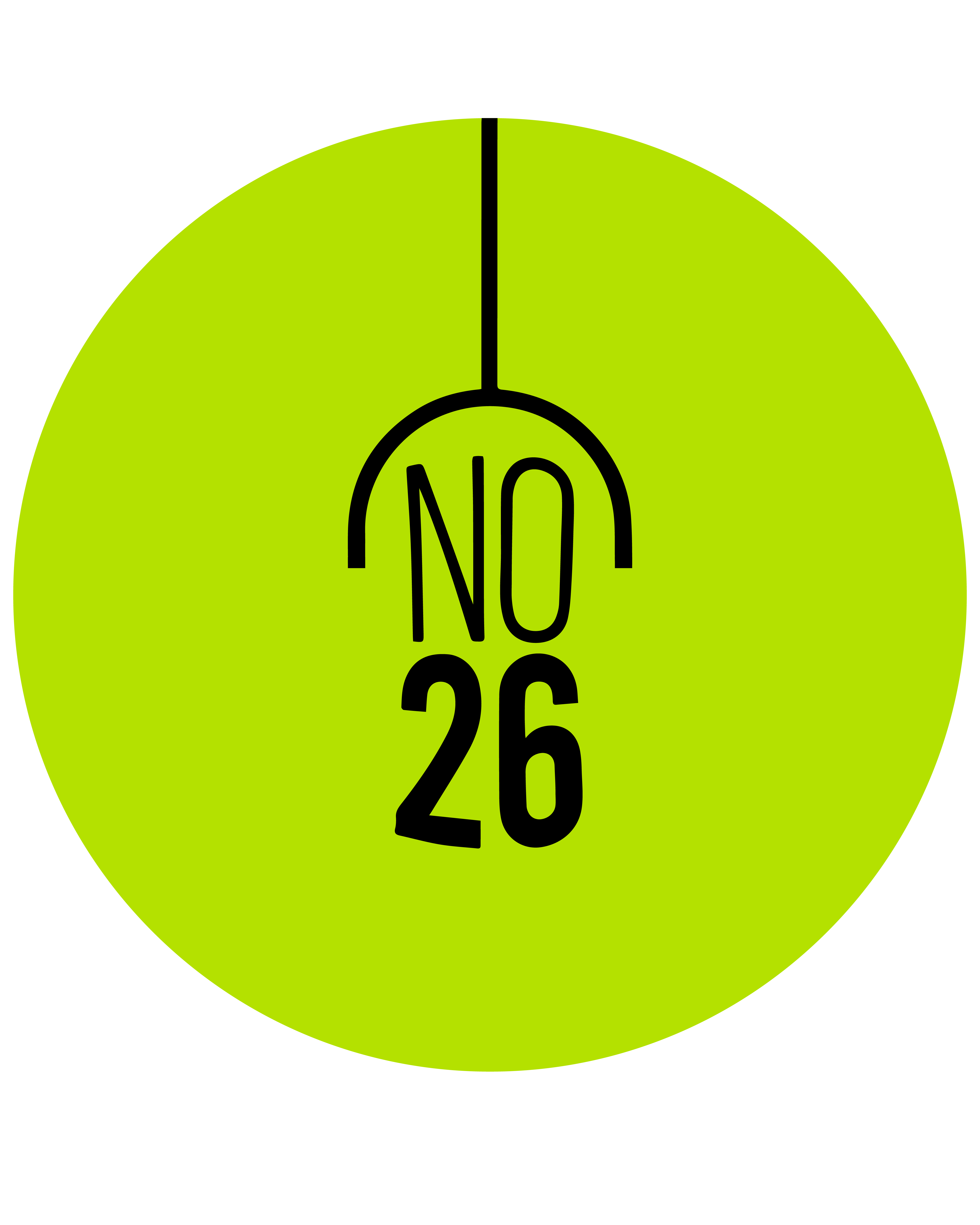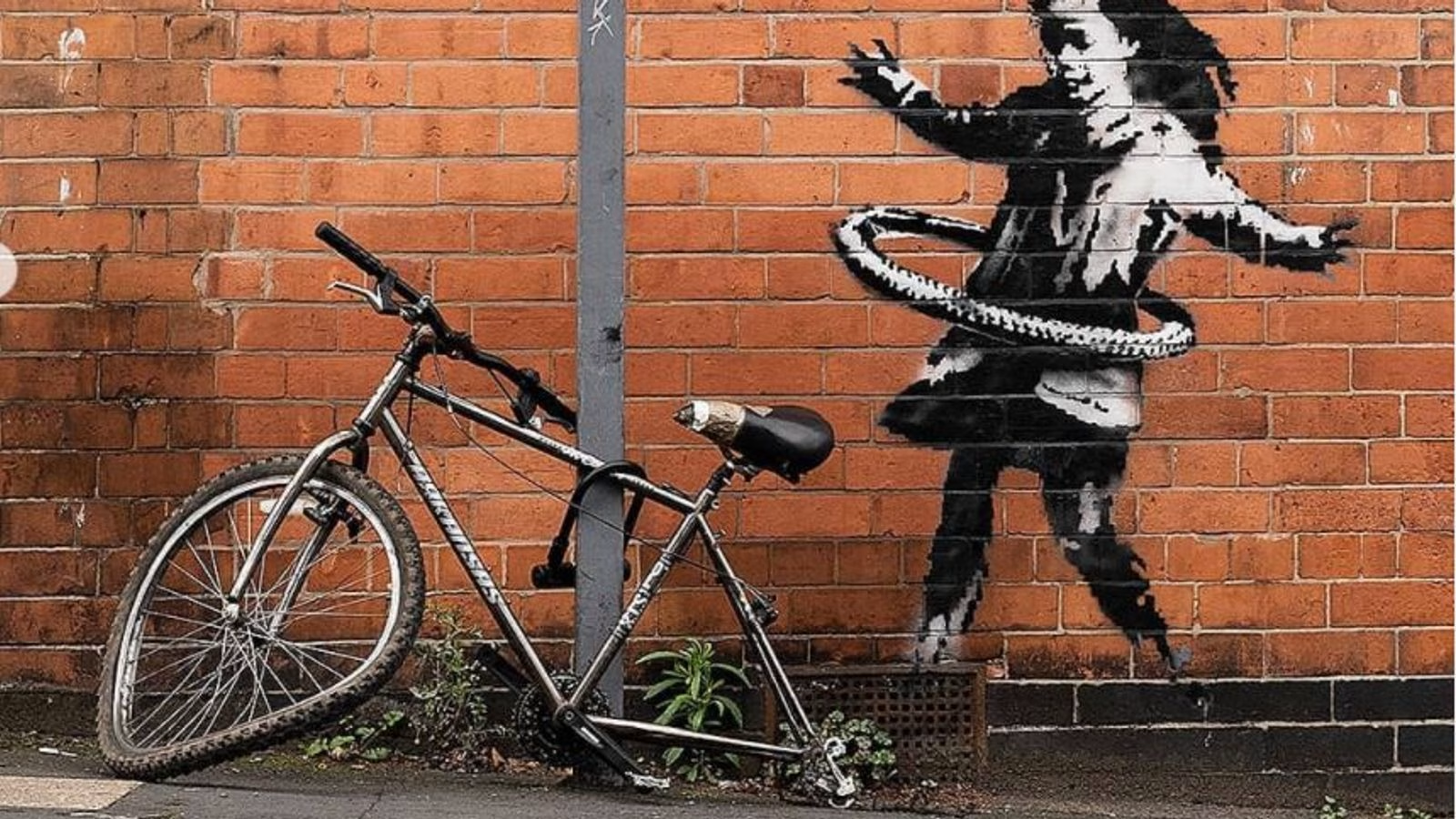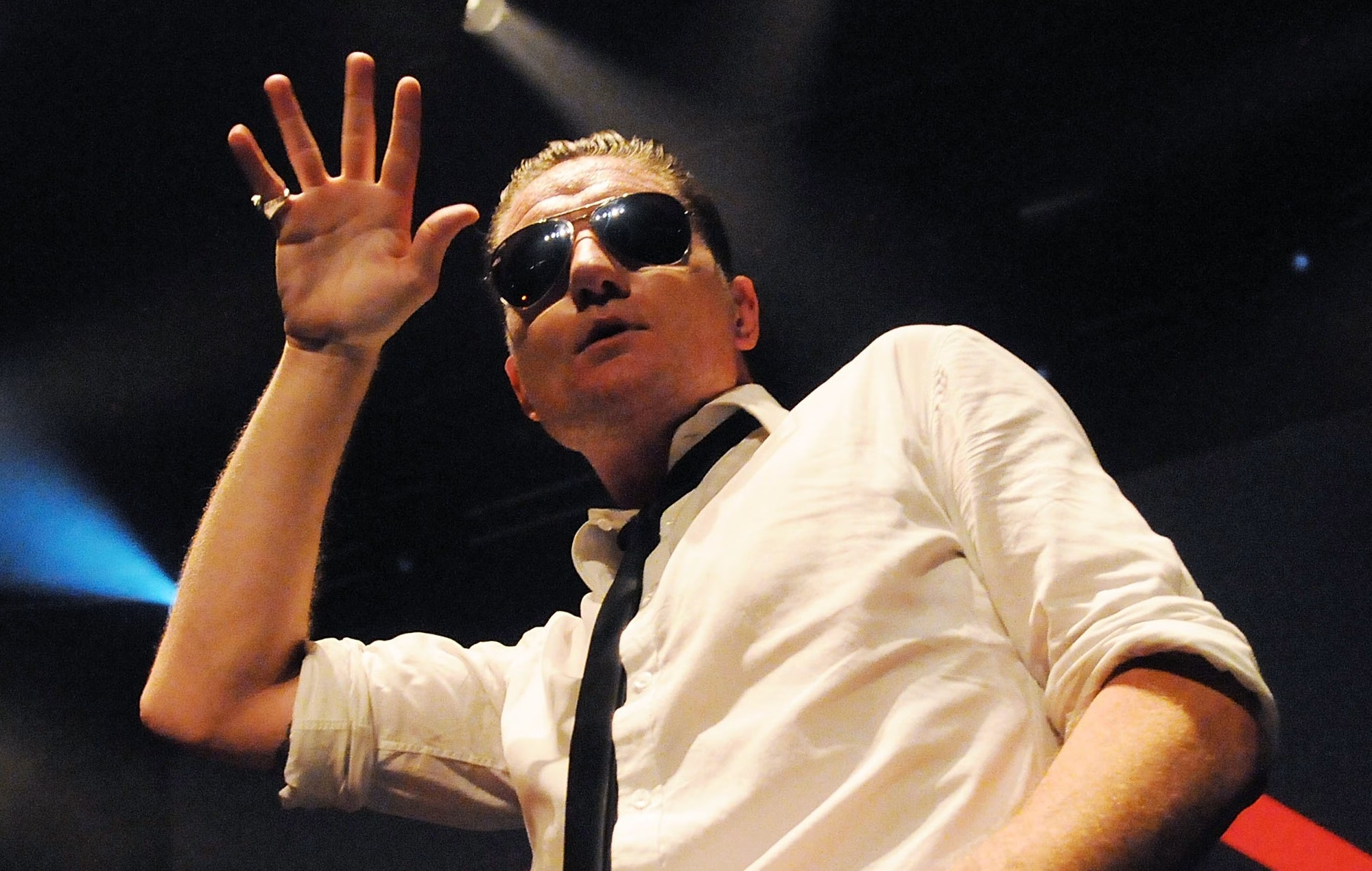London’s streets are a living canvas, where street art culture transforms urban walls into provocative galleries of social commentary and artistic rebellion. At the heart of this vibrant scene is Banksy, the enigmatic British artist whose satirical stencils have redefined contemporary street art. From his early rats scurrying across London’s underpasses to his 2024 animal-themed series, Banksy’s hidden masterpieces blend wit, politics, and cultural critique, making the city a treasure hunt for art enthusiasts. As we explore London’s street art scene in 2025, this guide, crafted with a cultural lens, reveals where to find Banksy’s surviving and hidden pieces, street art London, and urban art culture. Drawing on the latest sources, here’s your cultural roadmap to discovering Banksy’s elusive works.
Why Banksy’s Street Art Matters
Banksy, an anonymous Bristol-born artist, emerged in the 1990s as a pioneer of stencil art, using London’s walls to critique consumerism, war, and inequality. His works, often appearing overnight, spark global conversations, blending political art with cultural storytelling. In 2025, Banksy’s influence remains potent, with new pieces like the Clerkenwell Green mural and a lighthouse artwork fueling speculation about his artistic legacy. His hidden pieces, tucked in alleys or preserved under Perspex, are ephemeral yet enduring, reflecting London’s role as a global street art capital. For cultural enthusiasts, chasing Banksy’s art is a journey through urban art culture, where each mural tells a story of rebellion and resilience.
Cultural Insight: Banksy’s anonymity amplifies his cultural impact, turning his art into a public dialogue that challenges authority and commodification, resonating with street art culture worldwide.
Where to Find Banksy’s Hidden Pieces in London
Below is a curated list of surviving and hidden Banksy pieces in London as of August 2025, based on the latest sources, with cultural context and practical tips for art lovers.
- Finsbury Park: Tree Mural (Hornsey Road, N4)
- What to See: Unveiled in March 2024, this mural features green paint sprayed behind a pruned tree, creating an illusion of vibrant foliage, with a stenciled girl holding a pressure washer. It’s a commentary on environmental loss, blending eco-art with urban storytelling. Covered in clear plastic for protection, it remains a striking piece despite minor defacement.
- Cultural Significance: The mural, tied to St. Patrick’s Day, reflects Banksy’s knack for timing his works with cultural moments, sparking discussions on environmental activism in London’s art scene. Its placement in a residential area underscores his commitment to public accessibility.
- How to Find: Hornsey Road, near Finsbury Park station (N4 3EF). Accessible via Piccadilly or Victoria lines. Look for the tree opposite a block of flats.
- Cultural Tip: Visit during daylight for the best view, and pair with a stroll through Finsbury Park’s community gardens to connect with the mural’s eco-art theme.

- Chelsea: Elephant Silhouettes (Edith Grove, SW10)
- What to See: Part of Banksy’s 2024 “London Zoo” series, this mural on Edith Grove features two elephant silhouettes with trunks outstretched, painted on a residential building. One was defaced with white stripes, but the local council restored it with protective paint, ensuring its longevity.
- Cultural Significance: The elephants, part of a nine-piece animal-themed series, symbolize strength and vulnerability, reflecting social commentary on urban displacement. Their placement in affluent Chelsea juxtaposes street art culture with high society, a classic Banksy provocation.
- How to Find: Edith Grove and Edith Terrace intersection (SW10 0TQ). Accessible via Fulham Broadway (District line) or buses (11, 22). Look for the mural on a house wall.
- Cultural Tip: Explore Chelsea’s King’s Road galleries post-visit to contrast Banksy’s public art with London’s commercial art scene.

- Walthamstow: Pelicans at Bonner’s Fish Bar (Pretoria Avenue, E17)
- What to See: Another 2024 “London Zoo” piece, this mural depicts two pelicans eating fish on the side of Bonner’s Fish Bar. Protected by Perspex, it’s one of the best-preserved works from the series, showcasing Banksy’s playful take on urban art culture.
- Cultural Significance: The mural’s fish-and-chip shop setting humorously critiques consumer culture while celebrating East London’s working-class roots, a nod to cultural heritage. Its vibrant colors echo the area’s lively street art scene.
- How to Find: Pretoria Avenue and Northcote Road, Walthamstow (E17 7EB). Accessible via Walthamstow Central (Victoria line) or buses (123, 275).
- Cultural Tip: Grab a coffee at nearby William Morris Gallery to soak in Walthamstow’s artistic heritage before viewing the mural.
- Shoreditch: Guard Dog and His Master’s Voice (Rivington Street, E2)
- What to See: These two early Banksy murals (2003) adorn the courtyard of the former Cargo nightclub, now The Arch restaurant. The Guard Dog shows a policeman with a poodle, mocking authority, while His Master’s Voice features a dog aiming a bazooka at a gramophone, critiquing the music industry. Both are preserved under Perspex.
- Cultural Significance: Located in Shoreditch, London’s street art epicenter, these works highlight Banksy’s early satire and collaboration with artist Stylo, reflecting the area’s gritty urban art culture in the early 2000s.
- How to Find: Rivington Street, in The Arch’s outdoor seating area (E2 8AA). Accessible via Old Street (Northern line) or Shoreditch High Street (Overground).
- Cultural Tip: Explore Shoreditch’s Brick Lane for other murals, like those from the 2024 “London Zoo” series (now removed), to feel the pulse of East London’s art scene.

- Barbican: Basquiat Tributes (Beech Street Tunnel, EC2)
- What to See: Painted in 2017 for the Barbican’s Basquiat exhibition, these murals include a Ferris Wheel with crown-wearing figures and a Stop-and-Search scene depicting police frisking a Basquiat-inspired boy. Protected by Perspex, they remain vibrant, critiquing the commercialization of street art culture.
- Cultural Significance: These works honor Jean-Michel Basquiat while addressing racial profiling and the art world’s contradictions, making them a powerful political art statement in London’s financial district.
- How to Find: Beech Street tunnel, near Barbican station (EC2Y 8DS). Accessible via Circle, Hammersmith & City, or Metropolitan lines.
- Cultural Tip: Visit the nearby Barbican Centre for exhibitions, linking Banksy’s public art to institutional art dialogues.
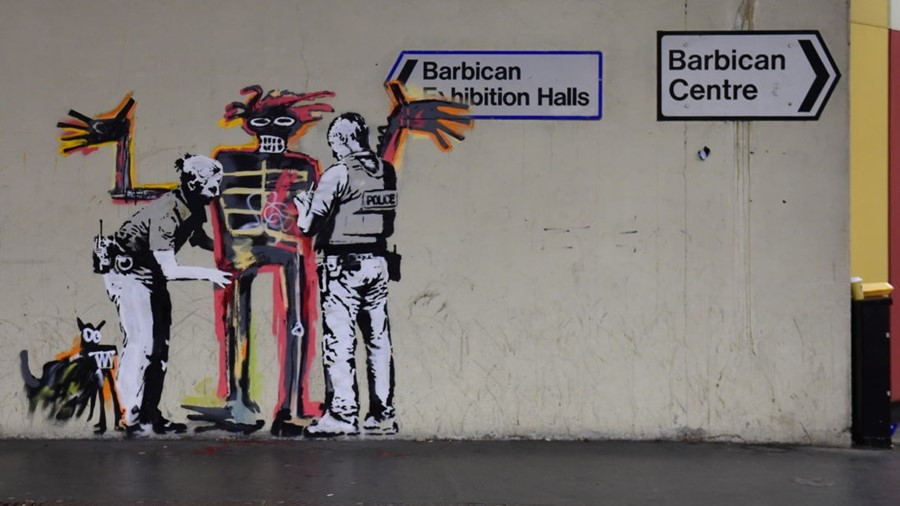
- Clerkenwell Green: Girl with Balloons (Farringdon, EC1)
- What to See: Discovered in August 2025, this suspected Banksy mural features a girl holding six gold balloons on a public toilet wall in Clerkenwell Green. Its authenticity is unconfirmed, but the style and balloons echo Banksy’s iconic Girl with Balloon, protected to prevent tampering.
- Cultural Significance: This hidden piece continues Banksy’s motif of innocence amidst urban decay, sparking debates on street art ownership in a gentrified area, aligning with London’s cultural narrative of transformation.
- How to Find: Clerkenwell Green, near Farringdon station (EC1R 0DU). Accessible via Circle, Hammersmith & City, or Metropolitan lines.
- Cultural Tip: Pair with a visit to nearby Exmouth Market’s indie galleries to explore contemporary art in Farringdon’s creative hub.

- London Transport Museum: Rat on Clock (Covent Garden, WC2)
- What to See: Unveiled in August 2025, this Banksy piece, originally on a TfL traffic signal box in Croydon, depicts a rat hanging from a clock. Now displayed behind protective glass at the London Transport Museum, it’s a rare indoor Banksy masterpiece.
- Cultural Significance: The rat, a recurring Banksy motif, symbolizes rebellion in urban spaces, tying into London’s transport culture. Its museum display reflects the city’s embrace of street art heritage, a shift from erasing to preserving.
- How to Find: London Transport Museum, Covent Garden Piazza (WC2E 7BB). Tickets ~£22; accessible via Covent Garden (Piccadilly line). Check ltmuseum.co.uk.
- Cultural Tip: Explore the museum’s transport art collection to contextualize Banksy’s work within London’s cultural history.
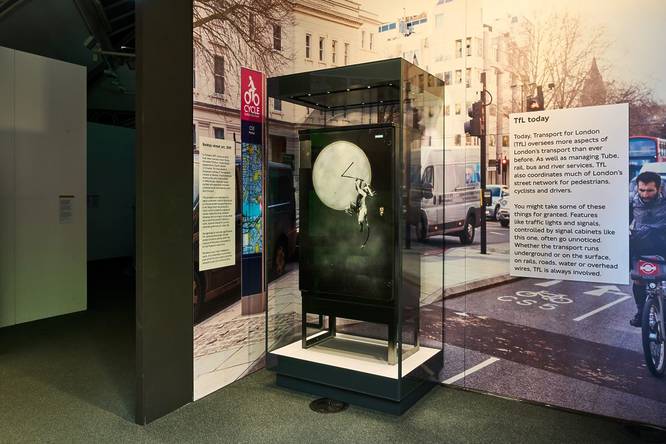
Hidden Gems and Lost Pieces
Banksy’s street art London is ephemeral, with many works lost to theft, defacement, or removal. Notable hidden pieces include:
- Stoke Newington: Royal Family Mural (Church Street, N16): A 2001 mock royal family waving from a balcony, used for Blur’s Think Tank album. Partially preserved despite council attempts to paint over it.
- Mayfair: Falling Shopper (Bruton Street, W1): A 2011 mural of a woman falling with a shopping trolley, high above street level, safe from vandalism.
- Poplar: My Tap’s Been Phoned (Chrisp Street, E14): A 2011 stencil referencing the phone-hacking scandal, still visible beside a water tap.
- Lost Works: The 2024 “London Zoo” series saw pieces like the Brick Lane monkeys and Peckham wolf stolen or removed, highlighting the transient nature of street art culture.
Cultural Insight: The loss of Banksy’s works, like the stolen Peckham wolf or defaced Charlton rhino, underscores the tension between public art and commodification, a recurring theme in urban art culture.

Cultural Experiences to Enhance Your Hunt
- Guided Tours: Join a London Street Art Walking Tour: Banksy & More (starting at ~£15) in Shoreditch or Brick Lane for expert insights into Banksy’s artistic legacy and other artists like Shepard Fairey. Check qello.com for 2025 schedules.
- Exhibitions: Visit The Art of Banksy in Soho (until January 2025, ~£20) for over 150 authenticated pieces, including Girl with Balloon and Flower Thrower. Not curated by Banksy, it still offers a deep dive into his cultural impact.
- Cultural Events: Align your visit with London Art Week (December 2025) or Frieze London (October 2025) for street art-inspired exhibitions, connecting Banksy’s work to contemporary art trends.
- Photography: Capture these hidden masterpieces with a camera, as many are temporary. Share on social media with #BanksyLondon to join the street art community.
Cultural Tip: Inspired by your platform, Apartman No: 26, visit Leake Street’s “Banksy Tunnel” (SE1 7NN), a legal graffiti zone near Waterloo, to see emerging artists echo Banksy’s political art spirit.
Practical Tips for Art Hunters
- Transport: Use an Oyster card (~£7 daily cap, zones 1–3) for Tube, Overground, or buses. Key stations: Finsbury Park (N4), Fulham Broadway (SW10), Walthamstow Central (E17), Old Street (E2), Barbican (EC2), Farringdon (EC1), Covent Garden (WC2).
- Budget: Most murals are free to view; museum tickets (e.g., London Transport Museum) cost ~£20–25. Guided tours range from £15–30. Budget £10–20 for meals at nearby cafés like Shoreditch’s Boxpark.
- Weather: Check forecasts for London’s unpredictable weather; bring an umbrella and comfortable shoes for walking tours.
- Preservation: Respect protective barriers and avoid touching murals. Check Instagram (@banksy) for new works, as locations are often revealed there first.
Cultural Perspective: Banksy’s Lasting Impact
Banksy’s Banksy London art is a cultural mirror, reflecting social commentary on war, consumerism, and environmental loss. His 2024 “London Zoo” series, with gazelles, elephants, and pelicans, rewilded the city, while 2025’s Clerkenwell Green balloons and lighthouse mural (location undisclosed) continue his artistic rebellion. These hidden pieces, from Shoreditch’s gritty courtyards to Covent Garden’s museum halls, embody London’s street art scene as a space for dialogue and dissent. As cultural enthusiasts hunt for his works, they engage with urban art culture that challenges the status quo, much like SALT Galata’s cross-cultural projects resonate with your platform’s ethos.
Cultural Insight: Banksy’s art, often at risk of theft or erasure, reminds us that street art culture thrives on impermanence, inviting art lovers to cherish the moment and question authority.
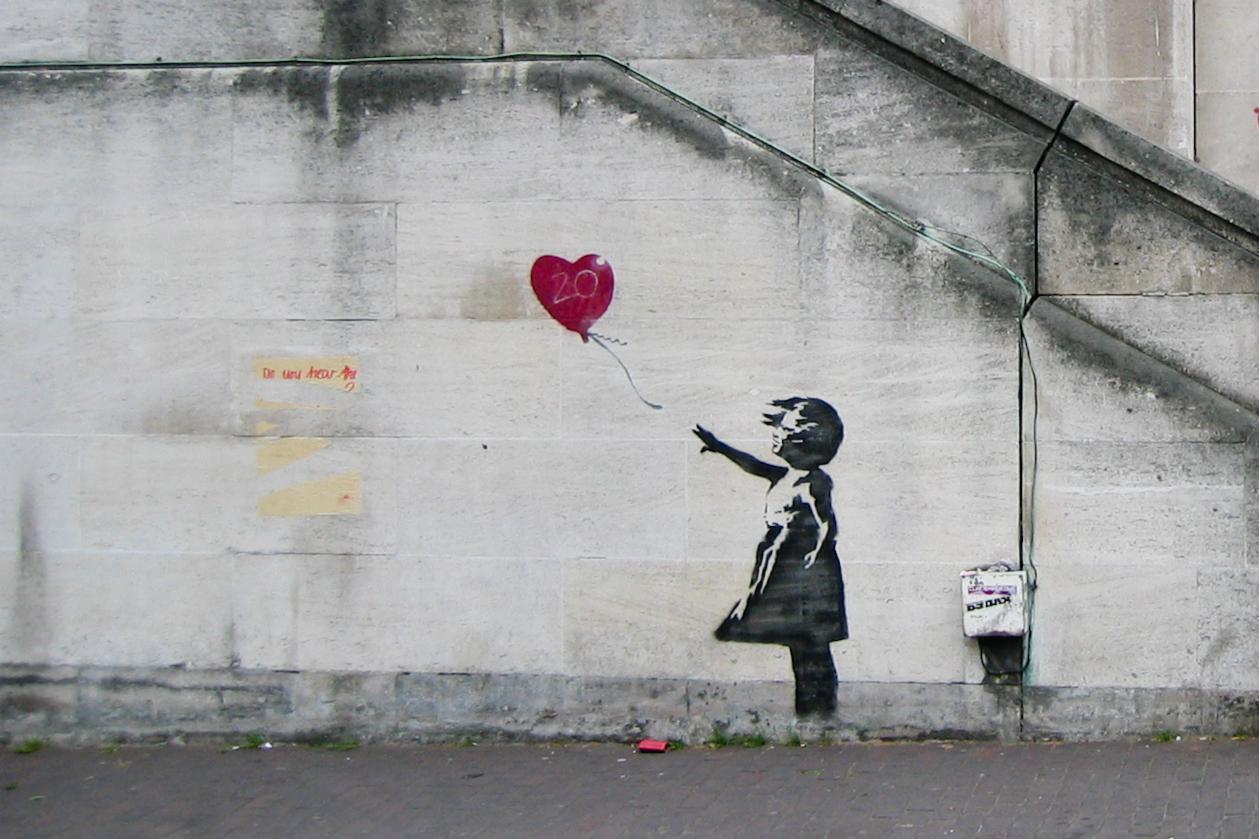
Final Note
Chasing Banksy’s hidden pieces in London is a cultural adventure through street art London, where walls become canvases for political art and cultural storytelling. From the eco-conscious Finsbury Park tree to the satirical Shoreditch dogs, these works invite art enthusiasts to explore London’s cultural landscape. As you wander, let Banksy’s artistic legacy inspire you to see the city anew, where every alley holds a story.
Stay tuned to our site for more cultural art guides and share your Banksy discoveries at [email protected]!
